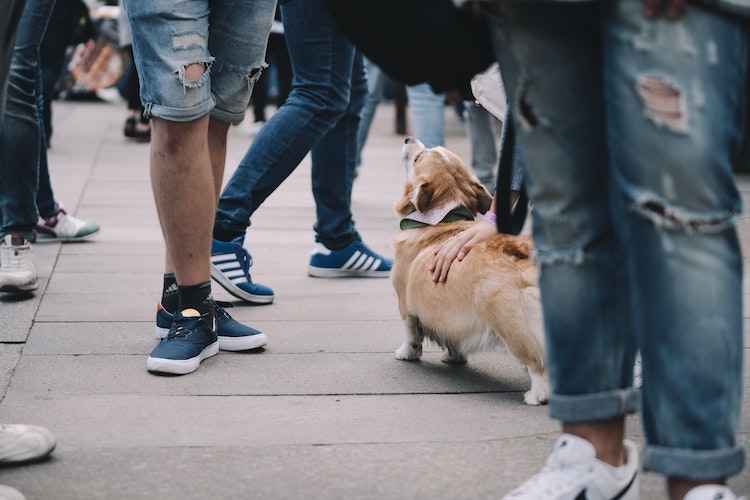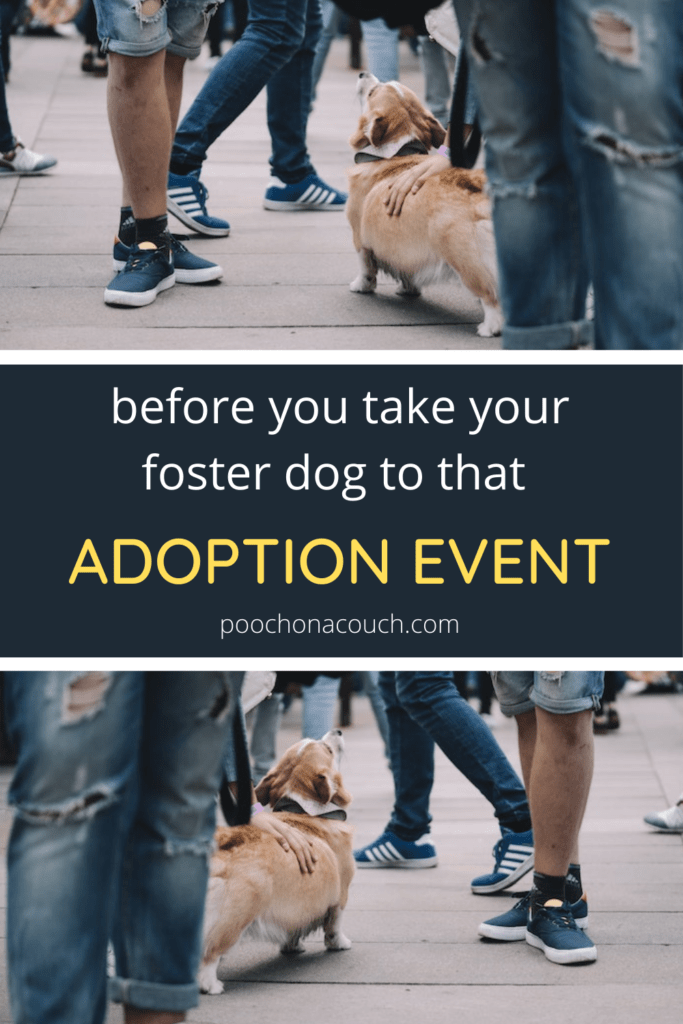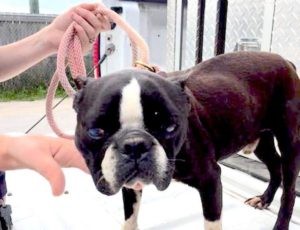I think pet adoption events can be an effective way to promote available adoptable dogs and to offer opportunities for a shelter or rescue agency to interact with the community where the community lives.
How easy is it? I mean, leash up your foster dog and go, right?
It wasn’t so easy for me.
I’m one of the thousands of individuals that volunteer to foster a rescued dog without receiving any behavioral training whatsoever.
Pet Adoption Events – A Growing Trend
Google ‘pet adoption events’ and your top hits will include (along with your local events – thanks, Google!) how-to articles from the leaders Petfinder, best friends society, PetSmart charities, Petco, the Humane Society, and others.
The advice from all of these giants is to get your adoptable dog in front of as many people as you can.
They point out that meeting a dog in person helps a family connect with an animal quicker thus helping that dog get adopted quicker. Supposedly, it’s faster than simply putting a dog’s picture and profile up on a website.
Hosting An Adoption Event Can Help Your Business!
It’s even trendy for your business to have a partnership with one or more shelters or rescue groups and allow adoptable dogs to hang out for a day or even hold adoption events.
I see adoption events at restaurants, car dealerships, furniture stores, gymnasiums, yoga studios, art galleries, malls, as well as corporate and independently owned pet supply stores and other venues.
Dress Up Your Dog Day is Everyday
According to our “leaders” in pet placement, you don’t even need to have an adoption event. Simply dress your dog up with eye-catching dog wear, have some homemade calling cards in your pocket, a practiced verbal bio full of positive statements and head out on the town.
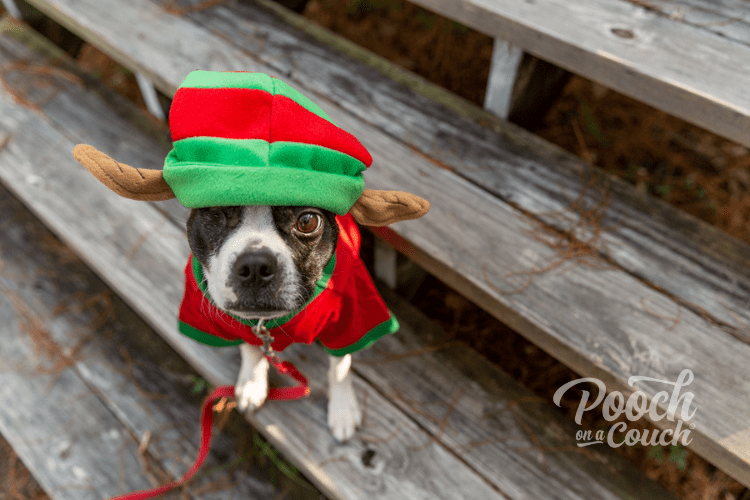
Missing The Point Of Pet Adoption Events?
Google’s top-ranked articles I found during a brief keyword search were very helpful in giving advice on how to organize an adoption event. Sadly, I found zero advice on how to make sure an adoption event is safe for dogs and people.
In other words, I found little advice on how to make sure your dog is ready to attend the event. In one of the Maddie’s Fund e-books, I found one or two lines that suggested: “dogs who are fearful or reactive might not be on their best behavior at an adoption event”.
They also mentioned in this same e-book that a foster probably shouldn’t use “shelter-speak” terms like “resource guarding” or “toy possessive” because these can scare off potential adopters. Hmm.
The Problem With Some Pet Adoption Events
An agency’s urgency to get dogs in front of potential adopters + little guidance/bad guidance/no guidance offered to the inexperienced foster home + a dog that hasn’t been properly assessed + lots of humans coming to see all of the special and-in-their-mind well-socialized, safe dogs = a bad incident waiting to happen.
and they do happen.
Pet Adoption Events Were An Epic Fail For Me
I was uneducated, naive, a “newbie” foster mom living in a city 250 miles away from the rescue agency’s home base. I didn’t know enough about dog stress, dog arousal, dog body language. I knew nothing about a dog’s personal space, dog coping mechanisms, or how to tell if they were frustrated.
I had no business taking any foster dog to one of these events. Even a well-adjusted, highly socialized dog.
I did not have the skills needed to take any foster dog to one of these events.
The First Pet Adoption Event
The First Pet Adoption Event was really more like a festival. It was held at Atlanta’s Centennial Park, a huge green space in the heart of downtown. I was sure there would be plenty of room.
There wasn’t. The setup was congested, tents up against each other, the walking path too narrow to really navigate a dog through a crowd. Even with crates, the tent was overcrowded on the inside. There was no place for the dogs to get quiet and decompress.
We had one fight between two foster dogs who actually lived with each other in harmony! One, completely over-aroused, turned on the other, a grab-and-hold to the face followed by shaking. No one in the group knew how to break up a dog fight, everyone yelling at the dogs “STOP IT!!!” – which was ineffective, in case you wondered.
It was effective in getting our tent a heck of a lot of attention.
I finally used my hands to pry the offending dog’s jaws apart (NOT SMART) and carried the dog into the tent and into an empty crate. Thankfully the other dog didn’t have a visible injury, but I’m sure its little face was pretty sore.
The Second Pet Adoption Event
The second pet adoption event was significantly smaller, more spread out, and had fewer people in attendance. The event was held in the parking lot of a veterinarian clinic. There were about a dozen other tents with rescue agencies and vendors.
At the time, Otis was my brand new foster dog. I didn’t know him very well, and I certainly hadn’t created opportunities to see how he would respond in congested settings prior to taking him to this event. I brought him in, bouncing at his end of the leash, and put him in his wire crate at the back of the tent.
Otis spent most of that afternoon in his crate, squeaking, panting, eyes wide (what we call “whale eyes”) as he continually looked left to right. He was completely trapped, helpless, anxious, and uncomfortable in his surroundings. It wasn’t until someone gave me a frozen stuffed Kong to give him that he was able to partially distract himself.
It took him days to calm down after that event.
My Thoughts About My Pet Adoption Experiences
As I write the following words, I want to be clear: I’m not being critical of the rescue organization because of my experiences. I do, however, want to point out what I think are problems with how some adoption events are managed.
I get it: We are all volunteers just trying to save the animals. There are limited funds, resources, and everyone, management included, have jobs, families, personal lives. Rescue is a passion we fit in where we can.
The faster we adopt out a dog, the quicker we can save another. <— While that statement makes total mathematical sense, It makes my stomach hurt. We should never, EVER be in a hurry to place a dog.
Donor dollars go directly to the dog’s care. Rarely (in my exposure) are any funds (or time!) spent on training foster humans. We get to “learn as we go” and get “support” when something is going wrong.
Within this numbers game (dogs in/dogs out, donor dollars in/donor dollars out) we forget our obligation: place well-adjusted dogs with well-matched families back into the community.
What Shouldn’t Have Happened at My Adoption Events
- I should not have been allowed to set up a tent at either event because the agency had no written process, protocol, or procedure to guide me. The agency is lucky that no accident occurred. It could have, and could have cost the rescue more money than the $300 we raised.
While we as a society seem much more tolerant of dog bites, we don’t like it when our pets or children are the victim of a dog bite. - I should have not had any of our dogs present because none of the dogs had undergone any assessment screening process and deemed ready to attend one of these events.
- Furthermore, we should have not had any dogs present because I had received no guidance or training on dog body language, dog arousal, or any observation tools whereby I could intervene before an incident occurred.
What Should Have Happened
- We should have made sure that there were more adults than there were dogs. As it were, we had more dogs than people to manage them. If everyone has a dog they are managing and handling, there’s no one manning the booth. OR, if everyone who is manning the booth and engaging with people also brought a dog, the dog may not get the attention it needs.
Every dog at an adoption event has a right to exit the adoption event at any time. I was unable to remove Otis from the event or ask anyone else to take him home. There was nowhere to take him to decompress. What I should have done was pack up, tent and all and left the event early. - We should have brought personal pets instead of unassessed foster dogs. I say this with some caution as I’d expect someone to know their personal pet very well: If there is no assessment process used to determine if a dog is able to attend an adoption event without worry, your personal pet may be the dog you should take to an adoption event instead.
- We should have been perfectly confident in our ability to draw event goers into our tent without the need for a dog. There should never be a felt obligation to bring dogs to an adoption event when they cannot handle that level of stimulation.
Pet Adoption Events: What I Think Important To Consider
- insist that you either participate in an event as a spokesperson or as a handler of a foster dog, never both. In other words, you should do one job: handler, or spokesperson. If you do both at the same time, your attention isn’t on your dog.
Is Your Dog Ready To Attend An Adoption Event?
- Determine if your foster dog is ready to attend such an event:
- Where is the event being held? What else is happening at the event? Know the details of the event and know if your dog can handle that level of congestion or noise/activity. Are there quiet places anywhere near?
- Obviously, the dog should be completely free from illness or injury and should not be recovering from a spay/neuter surgery. Dogs that do not feel well are not at their best. What’s your hurry? Let a dog restore wellness at home and meet the public when they feel 100%.
- If you do not know dog body language, learn it before you take a dog out in public. I cannot be more blunt.
- Prior to the event, visit the venue several times with your foster dog to assess their response to the lights, noise, movement of people. A foster dog’s first exposure to the pet store where you hold your events should not be the day of the event.
- You should already know how your dog meets strangers before you take them to an event. If they do not meet strangers well, they are not ready for an adoption event.
- A lot of dogs are kept in crates during an adoption event. Not all dogs are comfortable in their crates in a high stimulus area. Be prepared to take your dog home if they appear uncomfortable or are displaying any type of barrier stress.
- Adoption events are not the best place for your fearful dog to get over their fears. In fact, it may just do the opposit.
If you are using an adoption event to improve socialization skills, it should be to put a final polish those skills, not teach them.
In my opinion, reactive dogs should never attend adoption events. If you have any doubt your foster dog is ready for adoption events, a) stay home and b) talk with your force-free trainer. - Finally, If your dog needs to wear a prong collar or e-collar/”stim” collar to participate an adoption event, they are not ready to attend adoption events.
- Where is the event being held? What else is happening at the event? Know the details of the event and know if your dog can handle that level of congestion or noise/activity. Are there quiet places anywhere near?
Determine before you even begin fostering if you have a say in how/when/where you bring your foster dog to adoption events. YOU are your foster dog’s advocate. If you don’t think your foster dog is ready for adoption, they should be allowed to stay home. If you think your foster dog needs help from a certified dog trainer, work your ass off to get your dog that help.
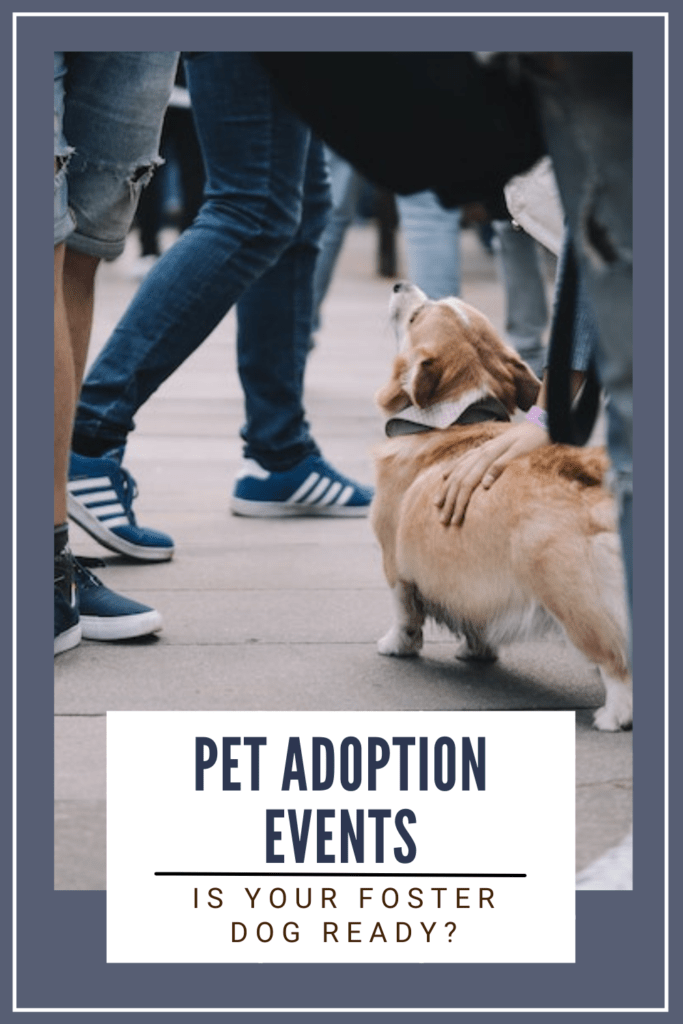
How to Find a Dog Trainer
Start with the Certification Council for Professional Dog Trainers database found here. From here, DO YOUR HOMEWORK. I just searched this database and found a certified LIMA trainer in my area that continues to use aversive methods, including shock collars. Ask questions!!
Content: ©2022 • Pooch On A Couch • All rights reserved
Popular Posts
- HOW TO CHOOSE A DOG RESCUE AGENCY
- ULTIMATE GUIDE TO FOSTERING: 10 SKILLS YOU NEED
- VOLUNTEER IF YOU CANNOT FOSTER

